WordPress is the world’s most popular content management system for good reason: it’s flexible, powerful, and accessible to users of all skill levels. But before you can launch your WordPress site, you need to understand the basic system requirements that will ensure your website runs smoothly.
In this beginner-friendly guide, we’ll walk through the essential WordPress minimum requirements and prerequisites for hosting a successful website. You’ll learn exactly what your server needs to run WordPress effectively, from PHP versions to database systems and hardware specifications.
We’ll provide the fundamental knowledge you need, focusing specifically on the minimum requirements to get started to give you a clear roadmap for WordPress success without overwhelming technical details.
Understanding the basics of WordPress system requirements
At its core, WordPress needs three critical components to operate: PHP, a database system (MySQL or MariaDB), and a web server with HTTPS support. These are the absolute minimum requirements of any WordPress installation to get your site online.
Think of these components as the engine, storage system, and delivery mechanism that make your WordPress site work. Just like a car needs all these parts to run smoothly, your WordPress site needs all these components to function properly.
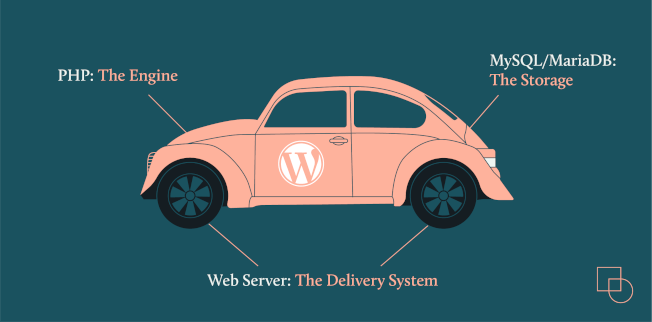
Unlike advanced configurations that focus on WordPress optimization and peak performance, these minimum requirements are about basic functionality – ensuring WordPress can run without errors or security vulnerabilities. While advanced WordPress setups might incorporate sophisticated caching systems or specialized server configurations, you can always optimize further later. Starting with the right foundation ensures a smoother experience from the beginning.
Understanding these core requirements in detail will help you understand how each one contributes to your website’s operation and make informed decisions about your WordPress hosting environment.
Let’s begin our exploration with PHP, the engine behind WordPress.
Essential PHP requirements for WordPress
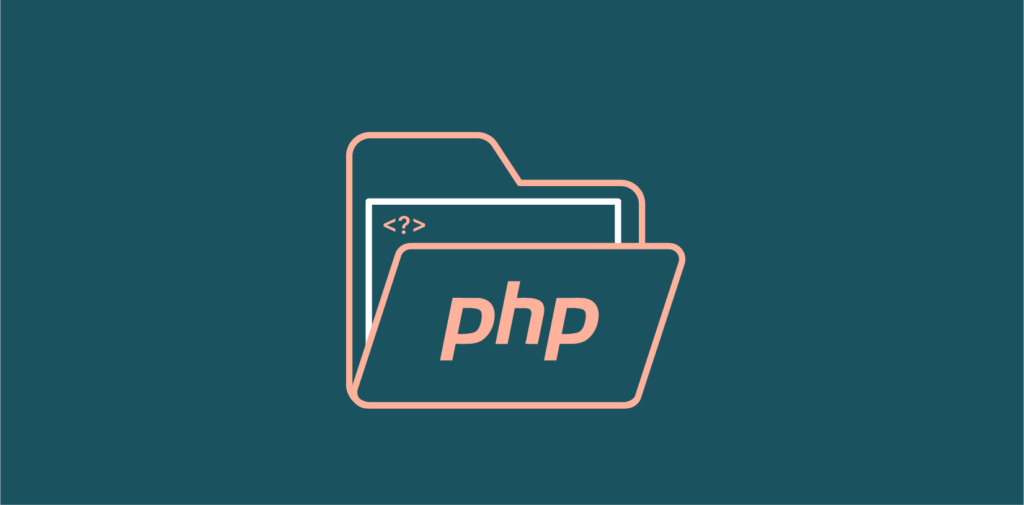
PHP, short for Hypertext Preprocessor, is the programming language that powers WordPress. If you’re new to web development, you can think of PHP as the engine that makes WordPress run – it processes all the code that creates your pages, manages your content, and handles user interactions on your site.
PHP versions are organized into three tiers:
- Active support, where new features and bug fixes are issued.
- Security fixes only, where critical vulnerabilities are patched without additional updates.
- End of life (EOL), where no further updates are issued for improvements or security patches.
You don’t have to run the latest release, but your WordPress site should always operate on a version of PHP that’s still in active support. This advice applies even if WordPress still supports an older PHP release.
At the time of writing this, for example, WordPress 6.7 is the latest major release and it supports PHP up to version 7.2. However, PHP 7.2 is a four-year-old release, long past its EOL date, so you’d probably be introducing security and performance issues by running it. And that’s before getting into compatibility issues with plugins and themes.
When a visitor loads a page on your WordPress site, PHP works behind the scenes to:
- Process WordPress code.
- Communicate with your database to retrieve content.
- Generate the HTML that displays in visitors’ browsers.
- Handle form submissions and user logins.
The good news is that you don’t need to write or understand PHP code to use WordPress effectively – just ensure your hosting environment provides the minimum required version. Most reputable hosting providers today include the latest stable release in their standard offerings, so you should talk to them if you’re unsure.
Now that we understand how PHP drives WordPress functionality, let’s explore where all your website content actually gets stored.
WordPress database prerequisites: MySQL or MariaDB
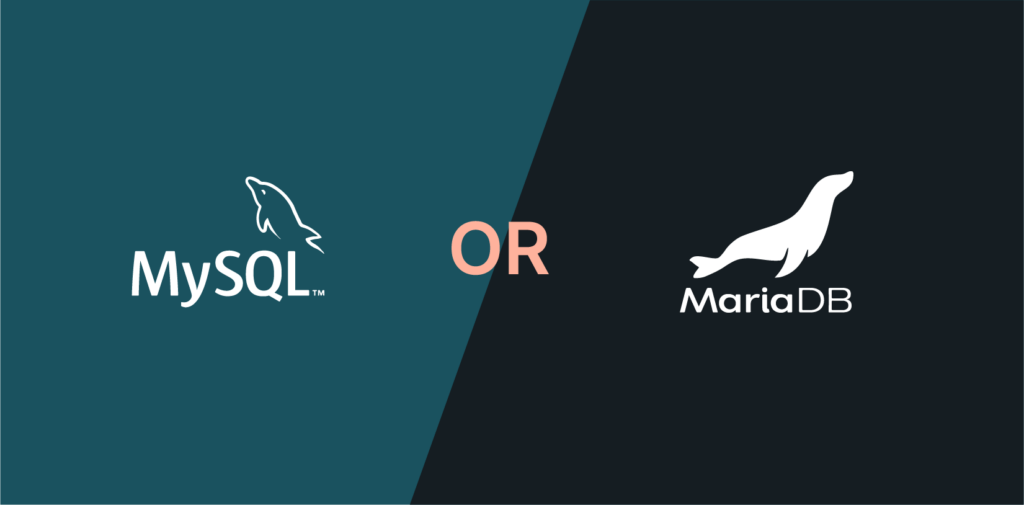
Every WordPress site needs a database to store your content, user information, settings, and other essential data. WordPress uses either MySQL or MariaDB as its database management system.
For basic WordPress functionality, at the time of writing this, you’ll need:
- MySQL version 8.0 or higher.
OR
- MariaDB version 10.5 or higher.
These database systems work as organized storage containers for all your WordPress content. When someone visits your site, WordPress uses PHP to request specific information from this database and display it to your visitor.
The database stores everything from your posts and pages to comments, user profiles, and plugin settings. Without a properly functioning database, your WordPress site cannot operate.
Most hosting providers automatically set up a MySQL or MariaDB database when you install WordPress. You typically don’t need to worry about managing the database directly – WordPress handles the communication between your site and the database system.
If you’re setting up WordPress manually, your hosting control panel usually includes tools to create a database that meets these minimum requirements.
With your content safely stored in a database, you need a way to deliver it to visitors. This is where web servers come into play.
Web server requirements for WordPress: Apache vs. Nginx
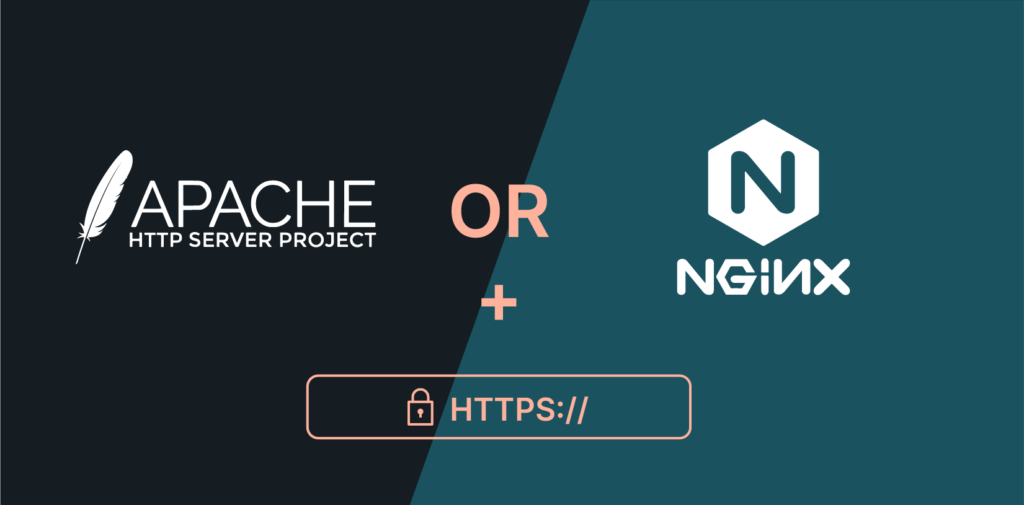
Your WordPress site needs a web server to deliver content to visitors. Think of the web server as the intermediary that accepts requests from browsers and sends back your WordPress pages.
WordPress recommends using either Apache or Nginx web servers:
- Apache: The most common web server, known for reliability and WordPress compatibility. It’s widely supported and comes pre-configured with many hosting packages.
- Nginx: A newer alternative that’s growing in popularity. It handles high traffic efficiently, though differences aren’t noticeable for most small sites.
Your web server should support Hypertext Transfer Protocol Secure (HTTPS) which adds a security layer to your website. HTTPS encrypts the connection between visitors and your site, protecting sensitive information like login credentials.When you see a padlock icon and “https://” in your browser’s address bar, that indicates HTTPS. Most hosting providers include free Secure Sockets Layer (SSL) certificates (required for HTTPS) with their WordPress hosting plans.

Essential hardware requirements
WordPress has surprisingly modest hardware requirements, making it accessible even on entry-level hosting plans. Here are the minimume hardware specifications your server needs to get started on WordPress:
- Processing power: WordPress requires a minimum of 1.0 GHz Central Processing Unit (CPU). This is the absolute baseline – most modern hosting providers offer significantly more than this minimum requirement.
- Memory (Random Access Memory or RAM): WordPress needs at least 512 MB of RAM to function properly. This is enough memory to handle basic WordPress operations for sites with moderate traffic and fewer plugins.
- Disk space: While WordPress core files take up less than 50 MB, you’ll need additional space for themes, plugins, and media files. A minimum of 1 GB disk space is recommended for a basic WordPress installation, though more is always better, especially if you plan to upload images and videos.
- Storage type: Standard hard disk drives (HDD) will work for WordPress, though solid-state drives (SSD) provide better performance. For basic sites, the storage type is less critical than ensuring you have enough space.
These requirements represent the minimum needed to run WordPress – not what’s ideal for growth or optimal performance. As your site expands, you may need to upgrade these resources accordingly.
Disk space and storage
When planning your WordPress storage needs, understanding how different site elements consume your available space is crucial.
Here’s a breakdown of storage requirements by component:
- Core WordPress installation: ~50 MB.
- Theme: 5-20 MB per theme.
- Plugins: 1-20 MB per plugin.
- Media library: Typically consumes the most space, with images using 1-5 MB and videos much more.
As your site grows, storage needs increase through additional plugin installations, theme updates, new content creation and user-generated content.
Even small blogs can quickly expand to hundreds of megabytes after months of posting with images. Ensure your hosting plan allows for storage expansion.Most entry-level hosting plans provide sufficient storage for new WordPress sites but monitor your usage as your site develops.
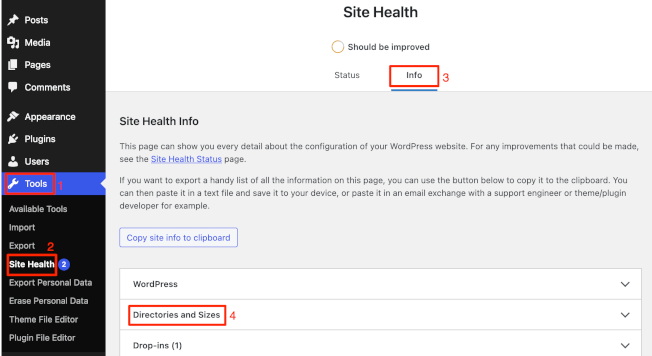
RAM and CPU basics
Your hosting server’s processing power directly impacts how smoothly your WordPress site runs for visitors.
The minimum requirements are modest but essential:
- RAM (512MB minimum): This temporary memory handles active operations like loading pages and processing forms. When your site receives multiple visitors, adequate RAM prevents slowdowns by keeping frequently accessed data available.
- CPU (1.0 GHz minimum): The processor executes all WordPress operations, from database queries to plugin functions. Basic WordPress sites with few visitors can function with minimal processing power.
Most basic hosting plans exceed these minimums, but understanding these specifications helps you evaluate hosting options and troubleshoot performance issues as your site grows.
PHP extensions for WordPress
PHP extensions are additional modules that enhance PHP’s capabilities for your WordPress site. These extensions allow WordPress to perform specific functions that aren’t included in the PHP core. Here are the essential PHP extensions your WordPress site needs:
- MySQLi: Enables WordPress to communicate with your MySQL database, allowing it to store and retrieve your content, settings, and user information.
- OPcache: Improves PHP performance by storing precompiled script bytecode in memory, making your pages load faster.
- OpenSSL: Provides secure data encryption for WordPress, essential for maintaining secure connections and protecting sensitive information.
- GD: Handles image processing functions for WordPress, enabling features like thumbnail creation and image resizing.
Most reputable hosting providers configure these extensions automatically. If you’re setting up a server yourself or troubleshooting issues, verify that these extensions are active to ensure your WordPress site functions properly.
Server location for beginners
The physical location of your hosting server affects how quickly your WordPress site loads for visitors.
When someone visits your website, data travels from the server to their device. The farther away the server is located, the longer this journey takes. If your server is in New York and your visitor is in London, data must cross the Atlantic before loading.
For best performance, choose a server location close to most of your audience:
- For a local business, select a server in your region.
- For international audiences, consider services with global reach.
Content Delivery Networks (CDNs) offer a solution for global audiences. A CDN stores copies of your website on servers worldwide. When someone visits, content loads from the server closest to them, improving speed regardless of main server location.
Most hosting plans include CDN services, making this performance boost accessible for beginners.
Choosing the right WordPress hosting
Selecting the right hosting for your WordPress site is a crucial decision that affects performance, security, and ease of management. For beginners, understanding the basics of WordPress hosting options simplifies this choice.
WordPress hosting comes in several forms, each suitable for different needs:
Shared hosting: The most economical option where multiple websites share resources on a single server. Ideal for personal blogs and small business sites with moderate traffic. While performance can be limited during peak times, most shared hosting plans easily meet WordPress’s minimum requirements.
Managed WordPress hosting: Specifically optimized for WordPress with automatic updates, enhanced security, and specialized support. These plans typically include pre-configured environments that meet or exceed all WordPress requirements. Perfect for beginners who want a hassle-free experience.
VPS (Virtual Private Server): VPS offers dedicated resources within a shared physical server. Provides better performance than shared hosting while remaining affordable. Good for growing sites that need more resources than shared hosting provides.
For most beginners, managed WordPress hosting offers the best balance of performance, support, and ease of use. Companies like Kinsta and WP Engine provide WordPress-focused hosting with optimized environments that handle all the technical requirements automatically.
When evaluating hosting options, ensure they meet the minimum WordPress requirements we’ve discussed, particularly PHP version, database compatibility, and basic hardware specifications.
Troubleshooting basic WordPress issues
Even with the correct minimum requirements in place, you might occasionally encounter issues with your WordPress site. Here are solutions to common problems:
White screen of death: When your site shows only a blank page, it’s often caused by insufficient PHP memory. Take a look to our guide to increase your PHP memory or add this line to your wp-config.php file:
define('WP_MEMORY_LIMIT', '128M'); Slow loading pages: If your pages take too long to load, your server might not meet the minimum RAM or CPU requirements. Consider upgrading your hosting plan or deactivating resource-heavy plugins.
Database connection errors: When WordPress can’t connect to your database, verify your database credentials in wp-config.php and ensure your database server is running.
Plugin/theme compatibility issues: Some plugins and themes require higher PHP versions than WordPress’s minimum. Check requirements before installation.
When troubleshooting doesn’t resolve the issue, professional assistance may be your best option, especially if:
- Problems persist after confirming your server meets all requirements.
- You’re unsure how to modify server configurations.
- Your site experiences recurring errors.
Rather than spending hours researching solutions or risking further complications, connecting with vetted WordPress experts through platforms like Codeable can quickly resolve these technical challenges. Before engaging professionals, understanding WordPress developer costs and pricing helps you budget appropriately for expert assistance.
Get your WordPress system requirements right with Codeable
When self-troubleshooting reaches its limits, Codeable‘s WordPress experts can step in to resolve your system requirement challenges.
They can help you:
- Verify your current setup against WordPress minimum requirements.
- Configure your PHP, database, and web server settings optimally.
- Set up proper memory limits and PHP extensions.
- Implement security best practices for your specific WordPress configuration.
We focus on getting the fundamentals right first, ensuring your WordPress site has the solid foundation it needs before advancing further.
Ready to ensure your WordPress site meets all the necessary requirements? Submit your project to Codeable today and let our experts help you create a WordPress site that’s stable and secure and respect your needs and budget.

Optimize your WordPress site with Codeable
Beyond meeting basic requirements, Codeable offers comprehensive WordPress services that take your site to next leve
Our network of vetted WordPress developers can help you:
- Enhance website performance with advanced caching and image optimization.
- Resolve complex compatibility issues between themes, plugins, and your server.
- Develop custom solutions for your unique WordPress challenges.
- Provide ongoing maintenance to keep your site running smoothly.
For beginners, working with Codeable means you don’t have to become a technical expert overnight. Our specialists handle everything from basic setup to advanced optimization, allowing you to focus on your content and business growth.
With Codeable, you get personalized assistance tailored to your specific WordPress needs, ensuring your site not only meets the minimum requirements but truly excel!
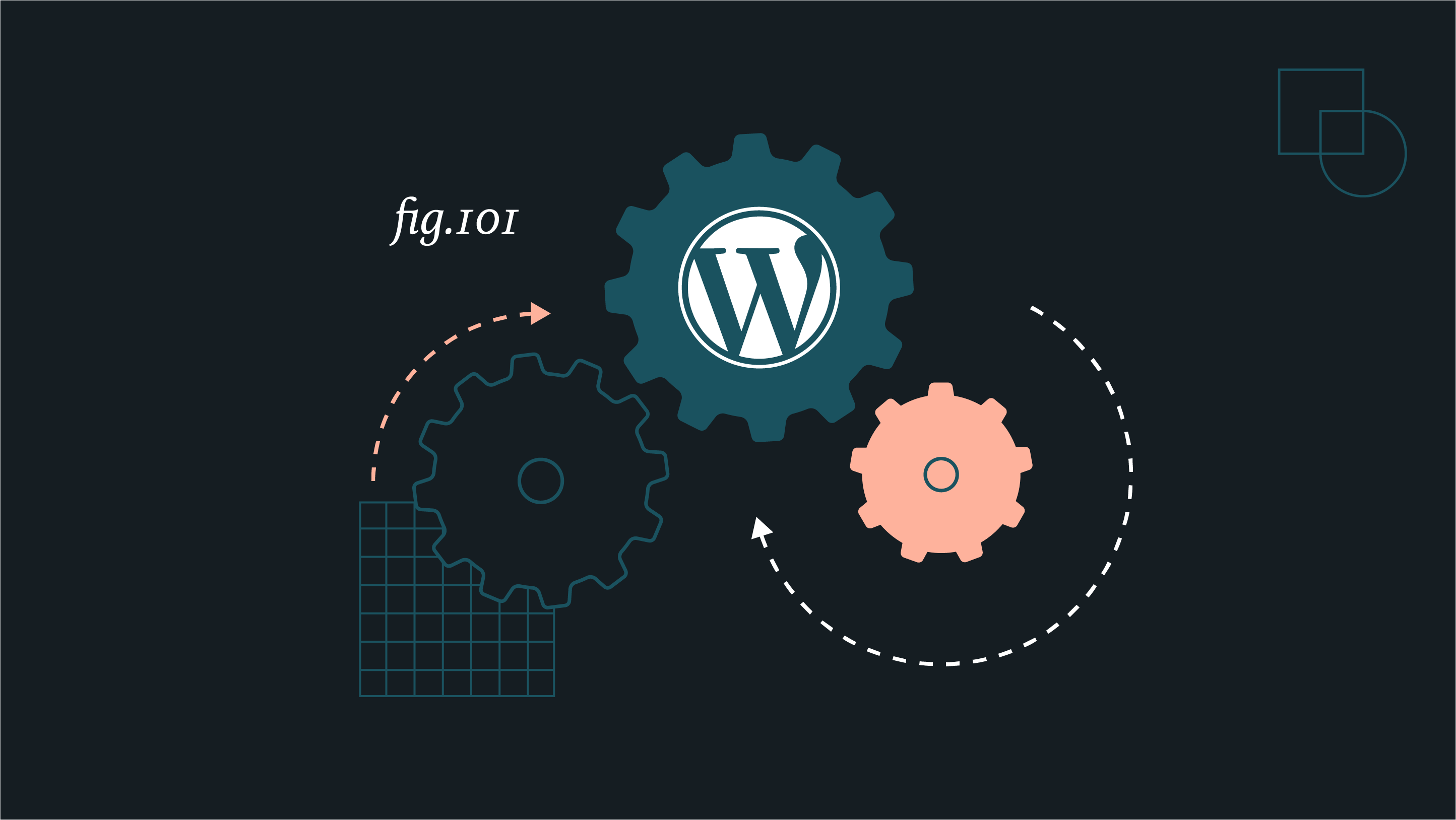
 Dream It
Dream It

